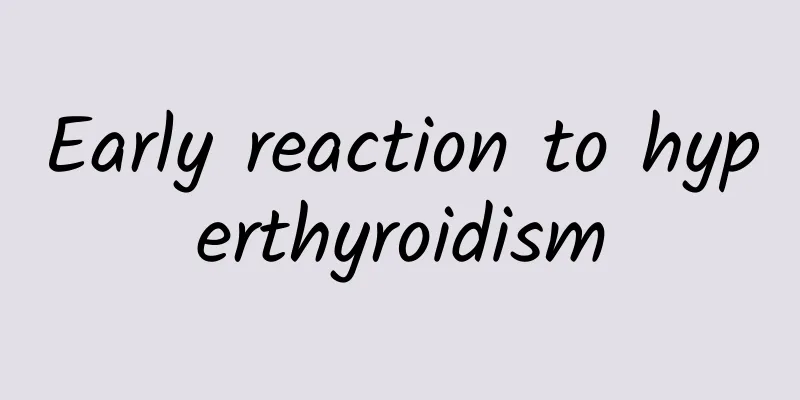The most basic symptoms of encephalitis in infants and young children

|
Infants and young children are a group with a high incidence of encephalitis. In the early stages of the disease, they have symptoms similar to those of a cold. As the disease gradually worsens, the child will experience headaches, nausea, and burning symptoms. For babies, they will not eat milk and will scream, which can lead to protruding fontanelles. When these symptoms appear, parents must take their children to the hospital for examination and provide timely and effective treatment. The most basic symptoms of encephalitis in infants and young children The initial symptoms of meningococcal disease are similar to those of general respiratory tract infections. As the disease worsens, severe headaches, pain in the back of the neck, and projectile vomiting may occur. The child may have an apathetic expression, become drowsy or irritable, and may even have convulsions or coma. After the baby gets meningitis, his fontanelle is bulging, his eyes are straight, he refuses to eat, and cries loudly. The most diagnostically valuable manifestation of meningococcal meningitis is skin hemorrhages. Bleeding spots usually appear within 1 to 2 days after the onset of the disease, distributed on the trunk and limbs, especially on the buttocks and lower limbs. At the beginning, there are only a few scattered bleeding spots, which then quickly develop into bruises and ecchymoses of varying sizes, or even large patches. The bleeding spots are bright red in the early stages, then turn dark red or dark purple. In severe cases, large areas of necrosis occur, exposing the muscle layer and causing ulceration. The most serious type of meningococcal disease is the fulminant type, which has an abrupt onset, severe course, and rapid progression. Large bruises often appear in a short period of time, and circulatory or respiratory failure often occurs within 24 hours. Children with this disease should be given emergency treatment. Any delay in treatment and rescue will endanger the life of the child. How to detect meningococcal disease early? ①Judge based on the season and age of onset. Infants under 6 months old can obtain antibodies from their mothers and rarely suffer from this disease. After 6 months, the antibody concentration in the blood gradually decreases and the possibility of getting the disease increases. This disease mainly occurs in children under 15 years old who have not been vaccinated with meningococcal vaccine. ② Make a judgment based on medical history. The onset is acute, accompanied by respiratory symptoms (the younger the age, the less obvious the symptoms), high fever, headache, and especially projectile vomiting, while vomiting caused by other diseases often begins with nausea and then vomiting. Infants and young children may refuse milk, be in poor spirits or become irritable, and their anterior fontanelle may be bulging or sunken due to vomiting and dehydration. ③ Within 12 hours, petechiae and ecchymosis appear on the skin and mucous membranes, or merge into patches and there is cold limbs, blurred skin, coma and frequent convulsions, indicating a serious condition. |
<<: Differentiation of cerebrospinal fluid in three types of encephalitis
>>: Early symptoms of encephalitis in 4-year-old children
Recommend
Can I eat ginger during early pregnancy?
Ginger is a common seasoning. It is not only foun...
Electric suction pump
In the respiratory department, suction is very co...
What are the ingredients of isinglass? What are the benefits of fish maw?
Maybe many friends still don’t know what is ising...
What are the sequelae of hysteroscopic electrosurgical resection?
The female uterus is very fragile. If you don'...
Kidney qi declines, spleen and stomach yang deficiency, spleen deficiency and dampness stagnation, water and dampness
In traditional Chinese medicine, people's con...
The boy got this disease when he was young, and he couldn't be a father when he grew up
A young couple, both highly educated, had been in...
What are the common reasons for vomiting in children?
The baby's physical condition is a topic that...
Total hip replacement rehabilitation guide, rehabilitation elements to understand
With the continuous advancement of current medica...
Frequent urination after childbirth
Some new mothers will experience frequent urinati...
Symptoms of Bipolar Disorder, a Common Mental Illness
Bipolar disorder is also known as manic depressio...
Symptoms of neuropathy
There are many patients with neurosis now, but ma...
Astragalus is not suitable for people
Scutellaria baicalensis is an excellent health ca...
Women, stop sleeping like this or you won't be able to be a mother
In daily life, if women have incorrect sleeping p...
Bone pain during early pregnancy
In the early stages of pregnancy, bone pain occur...
Men rub 3 parts of their body in the morning to ensure they feel refreshed all day long
Modern men, under pressure from life and work, of...









